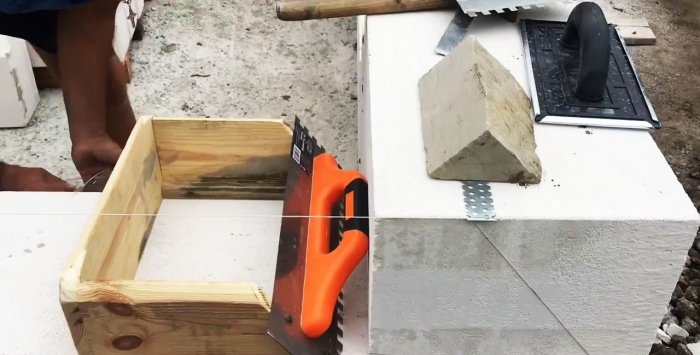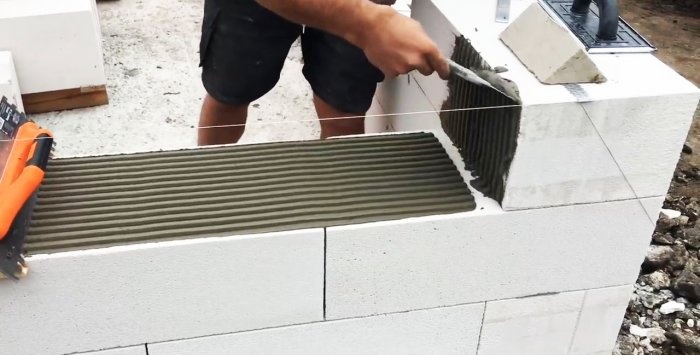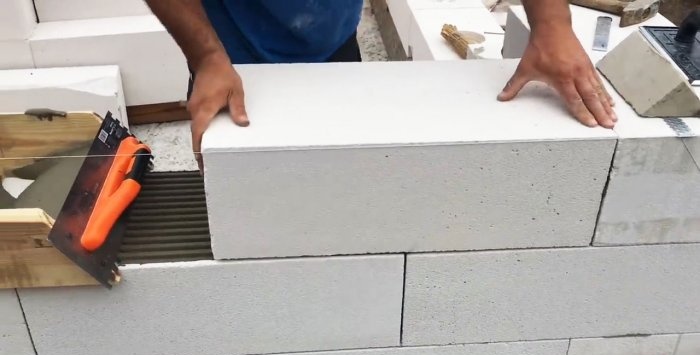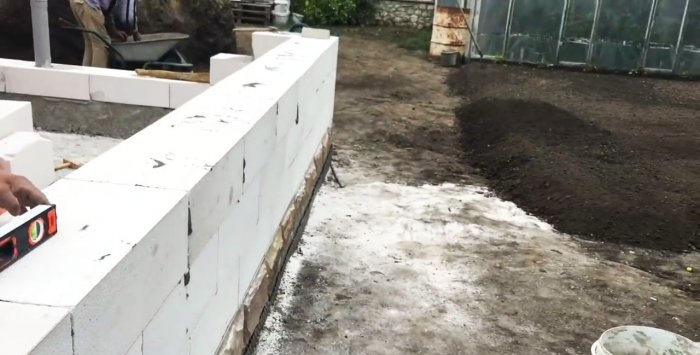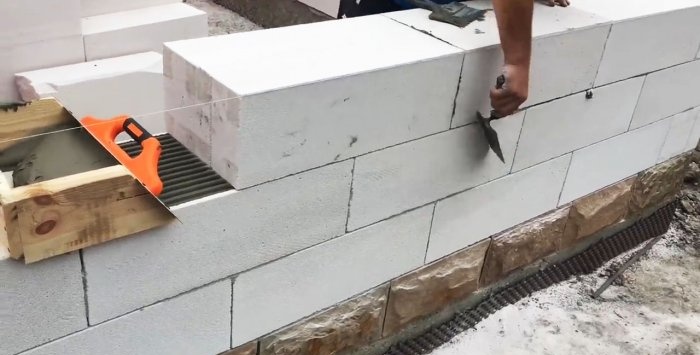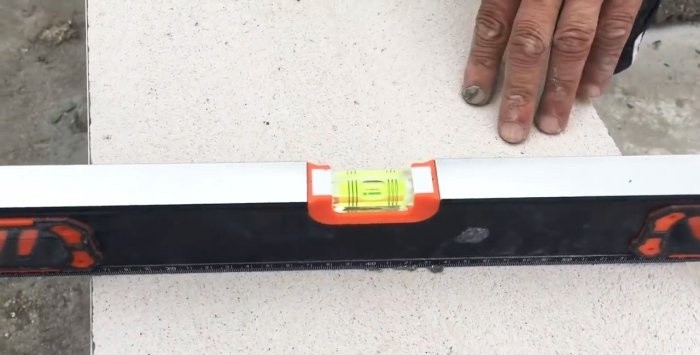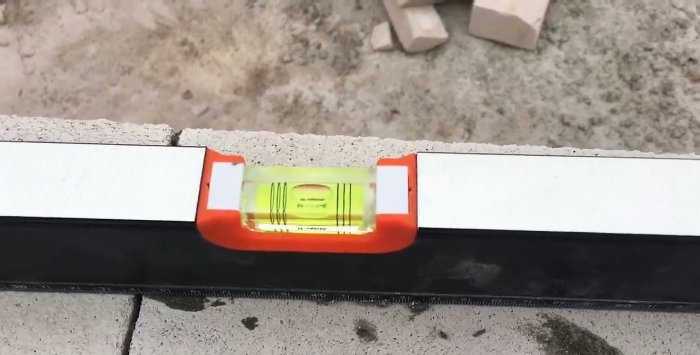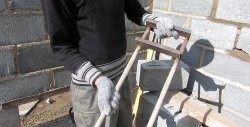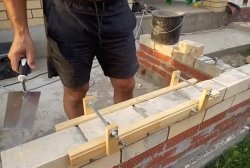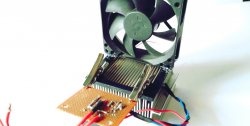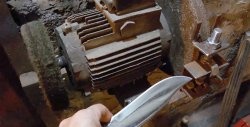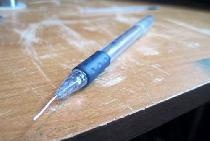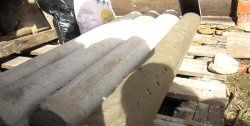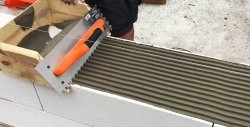Assembling a simple device
Materials for it can be found at any construction site or workshop. Plywood or board 20-30 mm thick, 10-15 cm wide, and a standard plastering trowel-comb are suitable. To hold the entire structure together you only need a handful of screws or even nails.
This device is a box without a bottom, in which a trowel is fixed in place of one of the edges. The side walls of this container are slightly lower than the transverse ones by several centimeters.Thus, they act as guides for the movement of the box itself along the already completed row of masonry.
The trowel must be fixed at an angle of 15-25 degrees so that the comb does not tear the line of the applied solution. It is most convenient to secure the trowel with self-tapping screws, so that you can dismantle it after work and wash the tool.
The width of the box must correspond to the width of the stacked blocks. It is most practical to assemble such a simple structure using self-tapping screws, so that it can be adjusted to fit different widths of bricks if necessary.
Important! From the inside of the box along the side walls it is necessary to build up small wooden blocks. Thus, during work, the brickwork will be reliably protected from contact with cement mortar.
Laying foam blocks using the device step by step
1. Place the solution into the prepared container with a trowel and pull it along the row of masonry. There is practically no discrepancy in the sizes of the blocks themselves, so our device should easily move along a straight line of a row of bricks;
2. Apply the mortar to the end of the previous block with a trowel and level it with a spatula-comb. If the size of the ridges on the solution container and the spatula are the same, then the seams are ensured as uniform as possible;
3. Place the block in its place in the row and nail it in with a rubber mallet or by hand. A stretched cord will serve as a guide for aligning the straight line. The clarity of the masonry must be constantly monitored using a bubble level;
4. We carry out the same procedure with the following blocks, not forgetting to follow the order of spacing of bricks in the masonry.
5. From the side parts of the masonry, from the front and back sides, do not forget to promptly pick up the excess mortar squeezed out by the blocks. At the end of the row, we check its evenness using a level.

